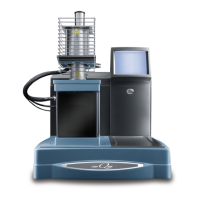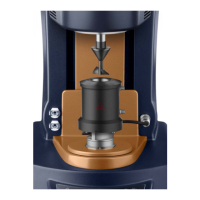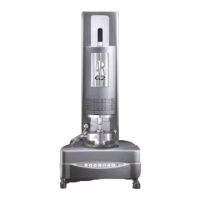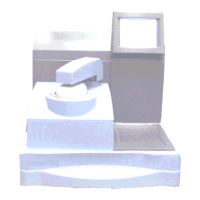TA I
NSTRUMENTS
TGA 2950 B–11
Hi-Res
TM
Option
can zip through baseline sections of your scan at
a higher heating rate while slowing down only
for transitions and still get the resolution of the
slower heating rate scan. For scans which
contain a large amount of baseline this can result
in very significant overall time savings with no
loss of resolution. The same speed/resolution
relationship applies to other heating rates as
well.
Higher resolution settings apply the Hi-Res
TM
technique more aggressively by reacting to
smaller percent/minute values. Some general
rules-of-thumb for selecting resolution settings
are as follows:
1. If you are uncertain what the resolution
setting and heating rate should be, then try
setting +3.0 and 50
°
C/minute. (Negative
resolution settings are covered in the
Advanced Hi-Res
TM
Techniques section.)
2. When trying to obtain better resolution,
try progressively higher resolution settings,
1.0 at a time, while leaving the heating rate
fixed.
3. The most useful resolution settings are
3.0 to 5.0 because they cover the most
commonly encountered bands of percent/
minute during typical decompositions. If
your decompositions tend to be explosive
in nature, with large percent/minute peaks
(greater than 50 %/minute), or if you wish
to minimize experiment time, then use
settings less than 3.0. If your decompo-
sitions are very gradual (less than 0.5 %/
minute peaks), or if it is important to limit
the rate of decomposition, try settings
greater than 5.0.

